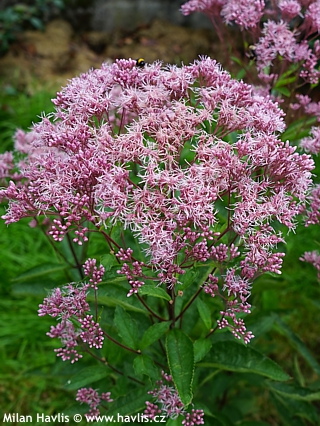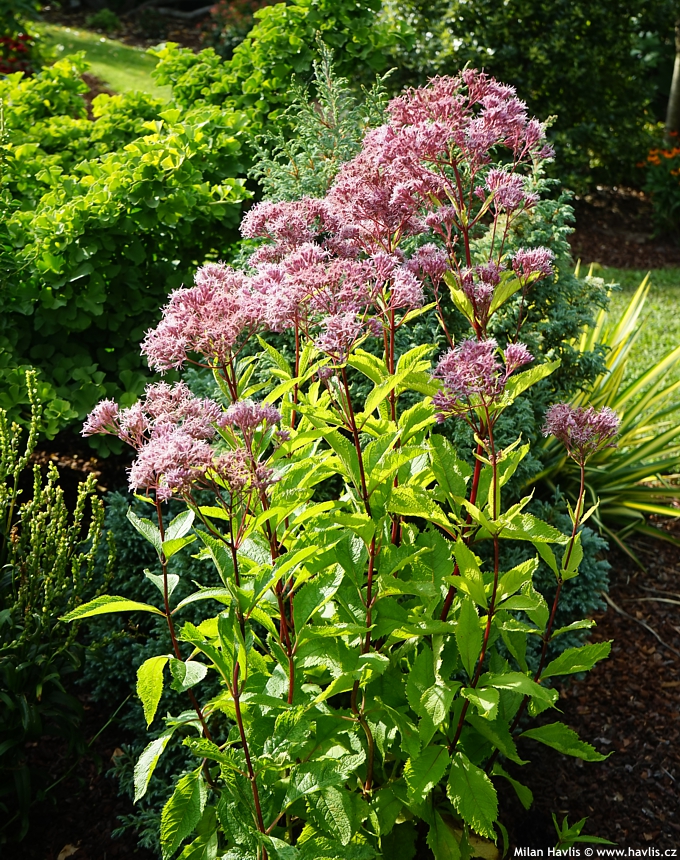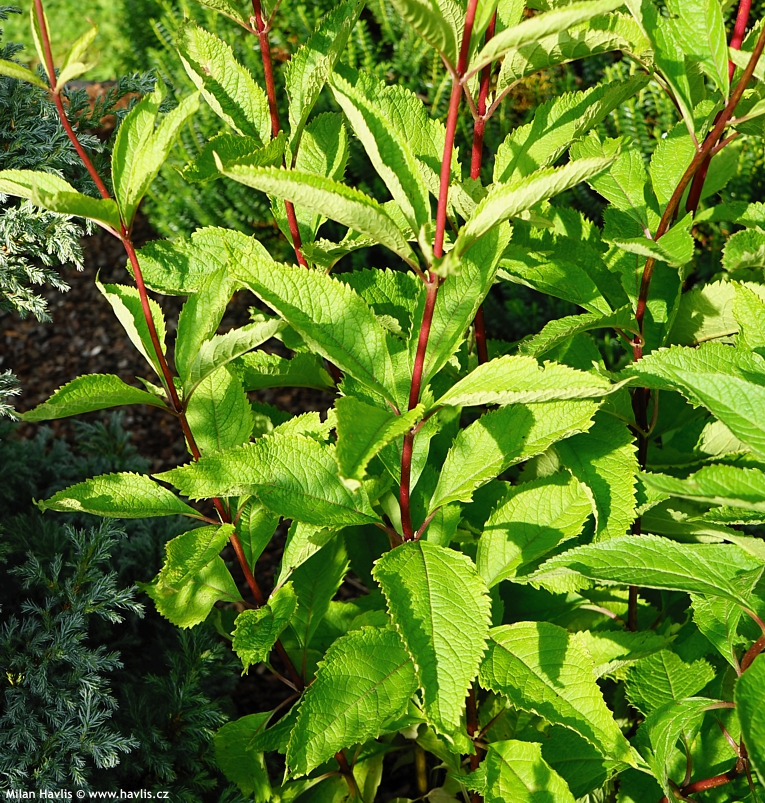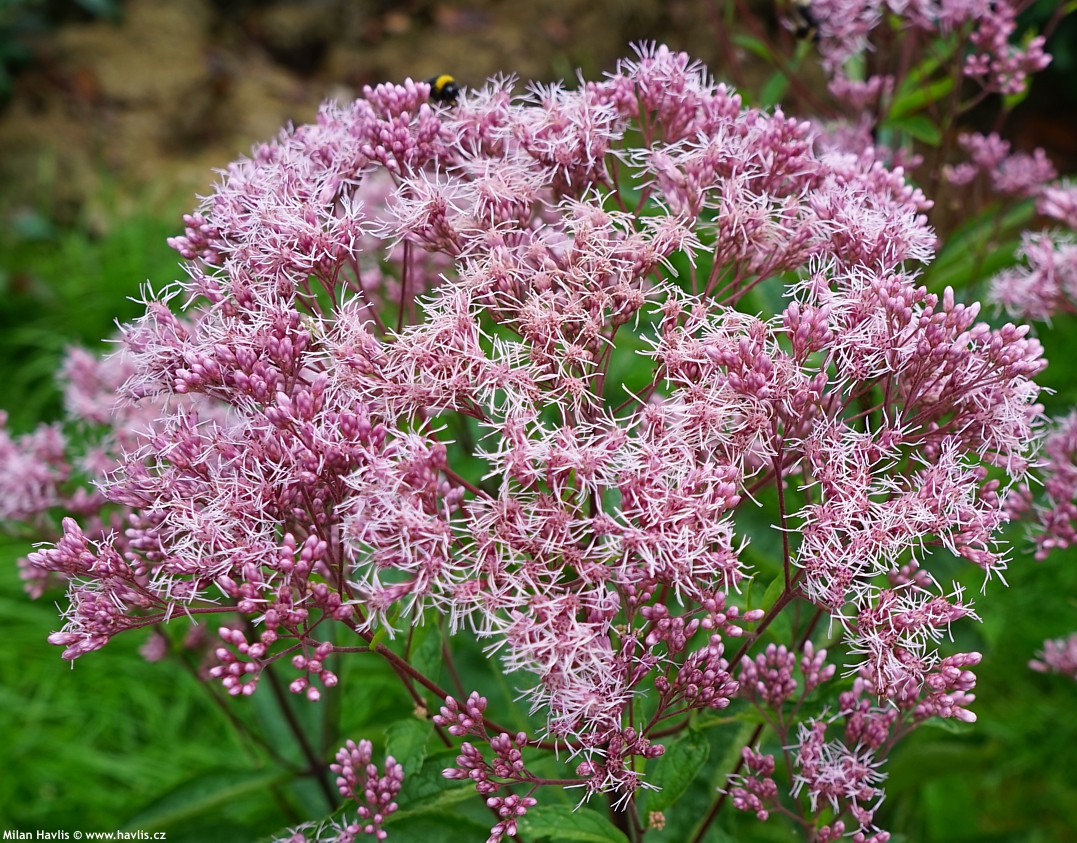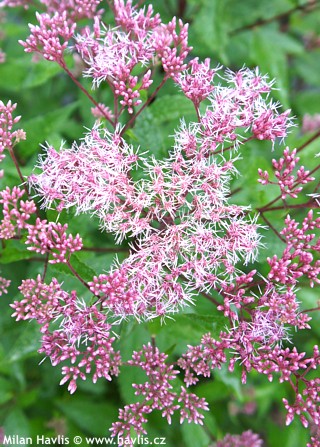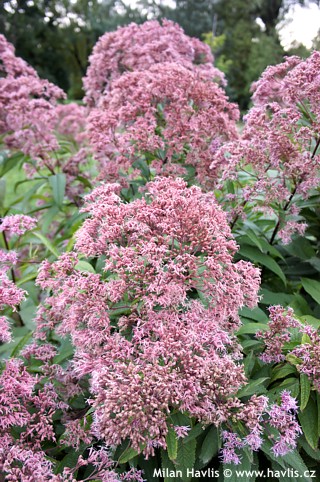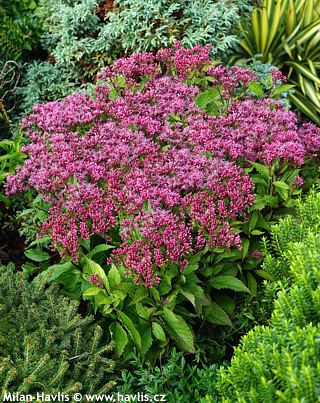Eutrochium (eupatorium) 'PHANTOM' Joe Pye weed
Eutrochium
Joe Pye was an American medicine man travelling from town to town with his medicines. This plant that is known for its curative effect on kidneys and urinary tract was named after him – Joe Pye Weed. It is a tall perennial with deep wine-red stems and attractive flowers in mid or late summer. It comes from North America where it is found in moist or boggy locations. Phantom is a hybrid Joe Pye weed variety bred by Hubertus Gerardus Oudshoor from the Netherlands as an interspecific cross between e. maculatum and e. rugosum. The result is a freely flowering plant of much shorter growth and compact habit. Granted patents: PP18354 (USA – 2014) and 24400 (Europe – 2009).
Phantom is a smaller growing Joe Pye Weed variety producing only some 80-100 cm tall, sturdy, maroon stems atop which in August appears a profusion of large, 25-30 cm wide, corymb-like, rich purple pink panicles composed of tiny, fringed flowers. Their calyxes are bright purple and petals almost white which enhances the calyx colour and makes the plant a glowing showcase. Flowers attract bees, butterflies, and other winged insect, and provide them with plenty of food late in the season when not many flowers bloom. Deciduous leaves form whorls of 3 or 4, they are broadly lanceolate, serrated at margins, mid to dark green.
This perennial was formerly called eupatorium but is now shifted to a new genus eutrochium because of its leaves which are opposite on eupatorium and whorled on eutrochium. It may get a little confusing when it comes to its hybrids that come from eutrochium genus but turn out to have opposite leaves.
Joe Pye Weed likes moist sites and when established it takes some level of occasional waterlogging, it can even grow at the marshy edge of a pond when it seeds itself there. It thrives in fertile, preferably alkaline soil in full sun or very light shade. Its stems are strong enough to take most weather caprices so you needn’t find it a sheltered spot. In spring remove all stems from previous year and beware of slugs that love its newly emerging foliage. It is hardy to at least -30 °C (USDA zone 5), possibly a little more.
Last update 11-10-2021

































